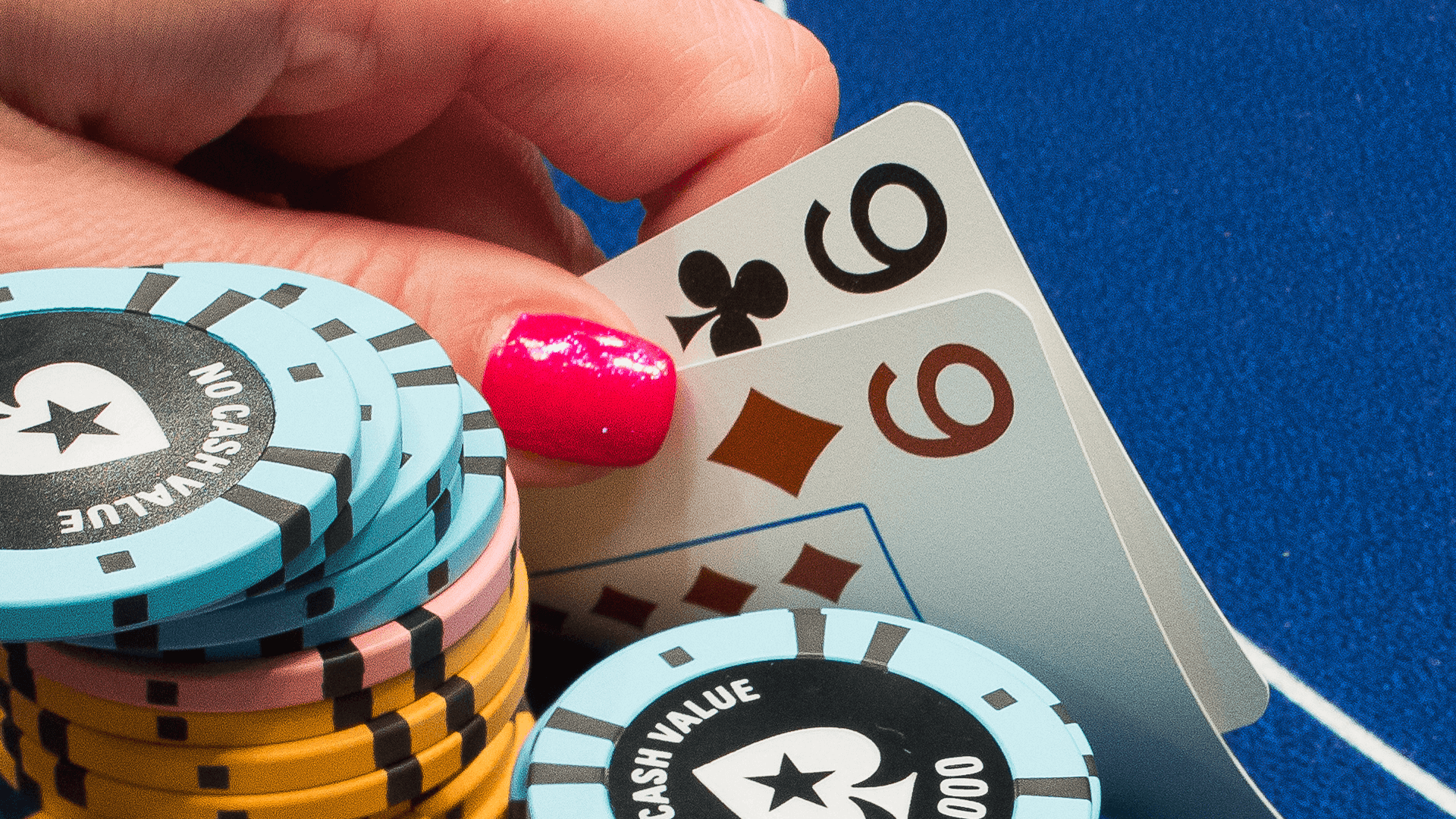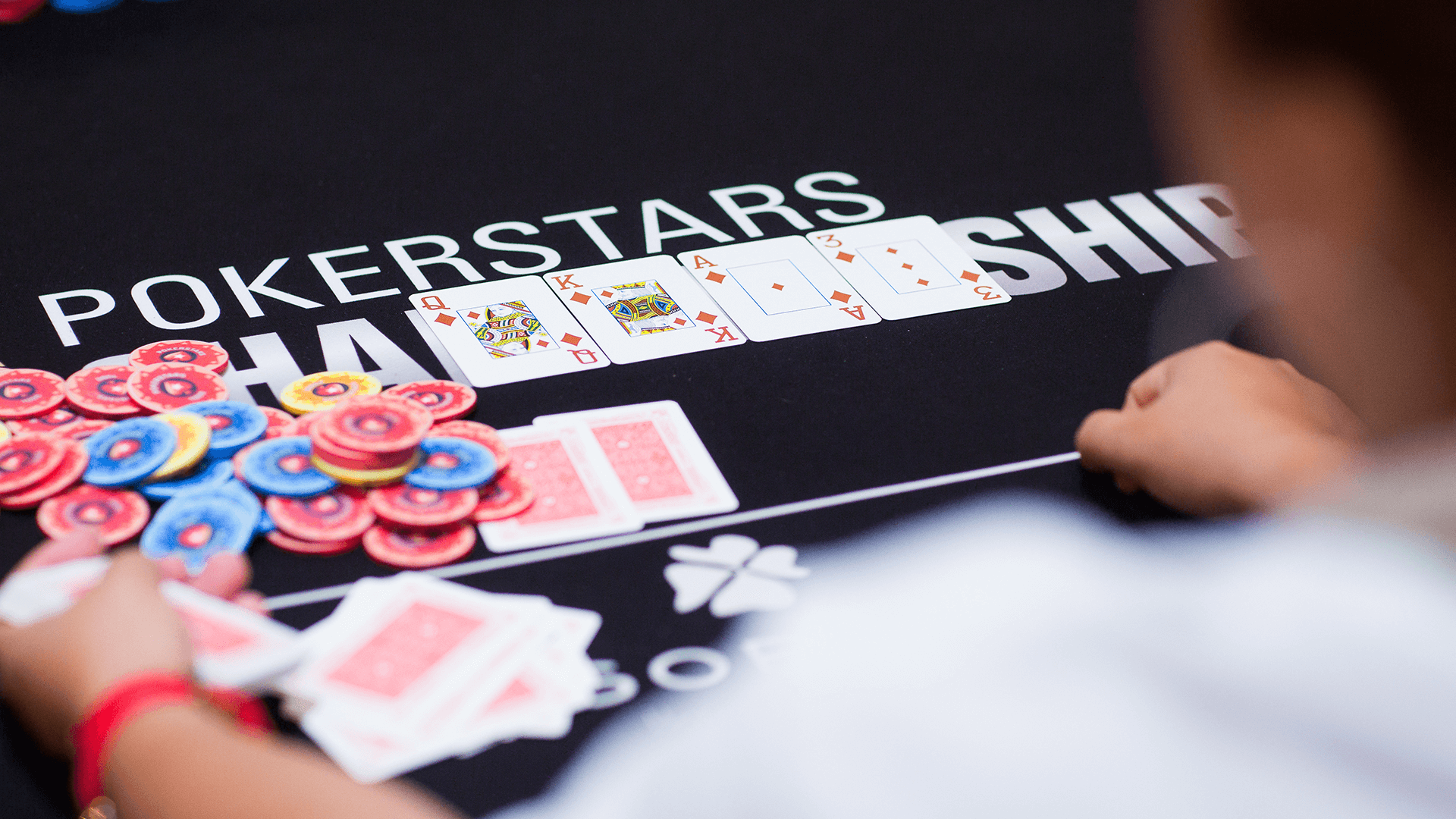Poker Starting Hands
You may end up seeing seven cards in a complete hand of Texas Hold’em but you will only see two at the very beginning: your concealed “hole” cards. It is the strength of your starting hands that can determine whether you should enter the pot at all.
Strong starting hands win against weaker hands in at least three out of four cases. The subsequent five cards can be used by all the players, so if you start with A♣ K♣ and your opponent has A♠ 8♣ , the latter probably has to hit an eight to win. (He or she can also make a straight or a spade flush, but the chances are relatively slim.)
In the above example, if the flop comes A♥ 9♣ 3♦ , both players would have a pair of aces, making the hands seem equally strong. But your A♣ K♣ is actually significantly stronger and will win this hand 90% of the time.

It follows that in order to have the better showdown hand as often as possible, you should have the better starting hand as often as possible too. It is vital to have an accurate idea of the value of your starting hand before you decide to enter the pot. You will combine its value with various other factors to determine how to progress.
This article explains the difference between good and bad starting hands.
Pocket Pairs: A Good Start
If your starting hands, or hole cards as they are known, form a pair then you already have a hand one step up the hand rankings ladder. This is known as a “pocket pair”.
Obviously, the quality of your hand also depends on the rank of the pair and it follows that the best starting hand in Texas Hold’em is a pair of aces. They look beautiful, and every Texas Hold’em player goes to sleep and dreams of finding nothing but aces in the hole.
A pocket pair can often win a hand of Texas Hold’em without needing to improve on the flop, turn or river. The probability of winning the pot without improving your own hand largely depends on the size of your pocket pair. If you are holding aces, your opponent has to make at least two pair in order to beat you.
Furthermore, if the board brings a third card of the same rank, you have made three of a kind, or a “set”. The strength of your hand will often be entirely invisible to your opponent.
But beware! Small pocket pairs can sometimes be dangerous if they do not improve. Another player would only need to match one of his or her hole cards with a bigger community card to make a higher pair. If you hold 4♣ 4♦ you would lose to a player holding 7♠ J♥ if there was either a jack or a seven on the flop, turn or river.
The biggest pocket pairs often qualify as monster hands, but smaller pairs can be considered at best speculative and sometimes even trash.

Evaluating Unpaired Cards
You will be dealt a pocket pair on average only once in every 16 hands. It means that in most cases your starting hand will not be a pair, and you will need to figure out another method to assess its strength.
There are a number of questions you should ask yourself to determine the strength of your starting hand:
What rank are my cards?
This is the most important question. The advantage of high cards is that you have a much better chance of winning if no one connects with the community cards, or if you hit a pair. If you have A♥ K♣ and your opponent has Q♠ J♦ you have a very big advantage. You will win the hand if a) neither of you hits a pair or b) you both hit a pair. The only way your opponent can win is if he or she connects with the flop in a more significant way.
It is also definitely better to have two high cards than only one because you will also have a good “kicker” to your hand.
Are my cards the same suit?
Having suited cards is more important than having connected cards generally. If you start with two cards of the same suit, the chance of making a flush is significantly higher. In addition, a flush formed using both of your hole cards is much stronger than a flush formed using only one. If you hold 8♠ 7♠ and the board shows A♠ 10♠ 6♥ 2♠ , you will probably have the best hand. However, if you are holding 8♠ 7♥ and the board is A♠ 10♠ 6♠ 2♠ , you are often behind as any spade higher than an eight beats you.
Are my cards of a similar rank?
This can be a decisive factor when attempting to make a straight. You have more chance of making a straight the closer in rank your hole cards are, e.g. 10♦ 9♠ . The bigger the gap, the less likely you are to make a straight. With a gap of four cards e.g. 10♦ 5♠ , it is no longer possible to make a straight using both cards.
Connected cards of high rank are especially valuable. The best starting hand that isn’t a pair is A♠ K♠ ( or A♣ K♣ , etc), which is usually considered worth playing in most situations. But it is also a hand that can get players in trouble. It needs to improve to beat even a small pocket pair in an opponent’s hand.
Low and unconnected cards of different suits are particularly weak, with 7♠ 2♣ considered to be the worst starting hand in Texas Hold’em. This is because it is two low cards that can not be used together to form a straight or a flush.
In the next lesson, we look at how the type of starting hand you are dealt affects your play. In other words, once you have assessed the strength of your hand, what should you do with it?
